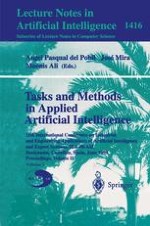1998 | Buch
Tasks and Methods in Applied Artificial Intelligence
11th International Conference on Industrial and Engineering Applications of Artificial Intelligence and Expert Systems IEA-98-AIE Benicàssim, Castellón, Spain, June 1–4, 1998 Proceedings, Volume II
herausgegeben von: Angel Pasqual del Pobil, José Mira, Moonis Ali
Verlag: Springer Berlin Heidelberg
Buchreihe : Lecture Notes in Computer Science
Enthalten in: Professional Book Archive
